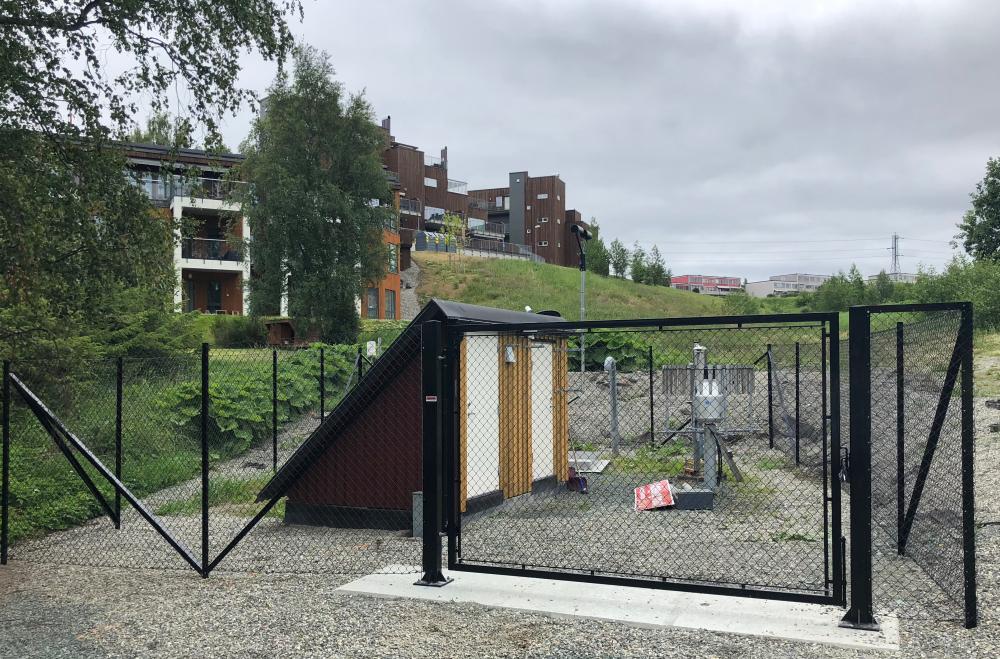IBM - Laboratories - Field stations
Field stations

Fieldstations
Risvollan Urban hydrological fieldstation is run by NTNU in collaboration with Trondheim Municipality and NVE. The station consists of a fenced area with instruments and instrument housing with an open over-water channel in the basement. The station is actively used in teaching and for research projects at MSc and PhD level. High-resolution data has been collected at Risvollan for over 30 years, which also makes it attractive for major international projects (EU program)
Risvollan rain bed is a pilot rain bed that was built in the summer of 2010 at Risvollan, Trondheim, for research purposes. Rain bed is a planted depression that collects, diverts and purifies surface water from the surroundings. Hidden under the vegetation, there is a well-thought-out system of filter medium and drainage. The water that comes from dense surfaces such as roofs, parking lots or roads is led to the rainbed surface where it infiltrates into the ground. This prevents harmful flooding, reduces the flood peak load to the drainage system and replenishes the groundwater in the urban environment, which can counteract settlement damage to houses and facilities.
Hydrological field station
We have a hydrological research field in Sagelva by Jonsvatnet outside Trondheim which has been in operation since 1969 and was established as part of the international hydrological decade between 1965 and 1975. Today we have two measuring stations for climate data, three stations for water flow and one station for groundwater in operation.
We have a collaboration with NVE on the main station in Svarttjønnbekken. We use data from the Sagelva field mostly for research and teaching, but data has been used by us and others in various assignments. Data from Sagelva is the basis for assignments in the subject of hydrology and used as an illustration of processes and calculation methods. We also use the field as a destination for an excursion where students get to see how the data we use in calculations is collected, and how different instruments work. Data are also used in master's theses, for example on snow modeling, floods in small fields and for hydrological modeling. Data are also used in doctoral work at the department.
We also do field measurements in connection with master's and doctoral degree projects in watercourses and precipitation fields elsewhere. We measure bathymetry with various instruments, water flow, sediment transport and other variables in rivers and lakes and we measure snow in precipitation fields. An example of this is the measurement of ice loads on bridges. Data from Sagelva has also been used for various assignments, such as assessing how climate change will affect the drinking water supply to Trondheim. Then we use a long time series with water flow from Hokfossen measuring station to adapt the model that calculates the inflow to Jonsvatnet in the future.
